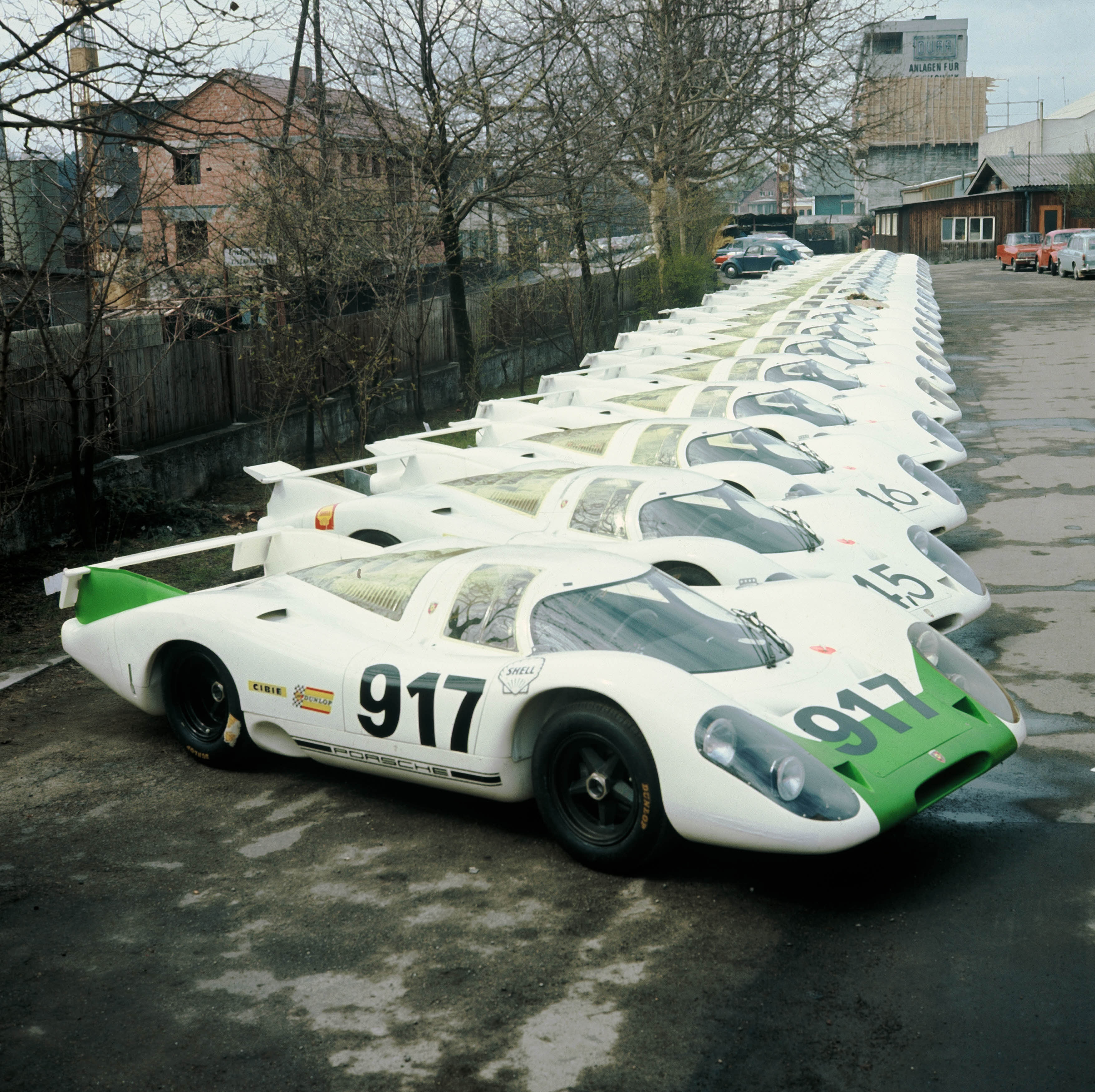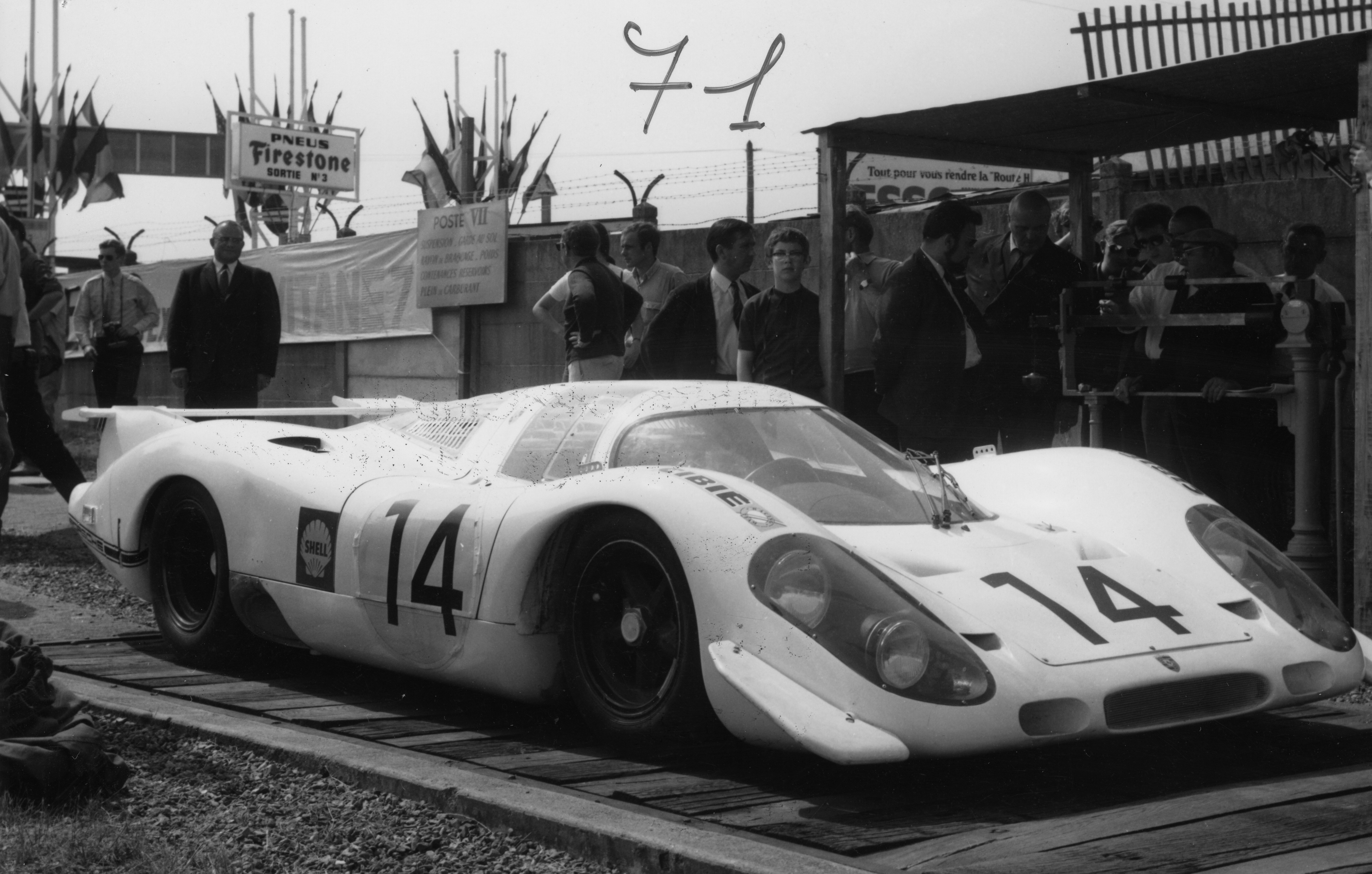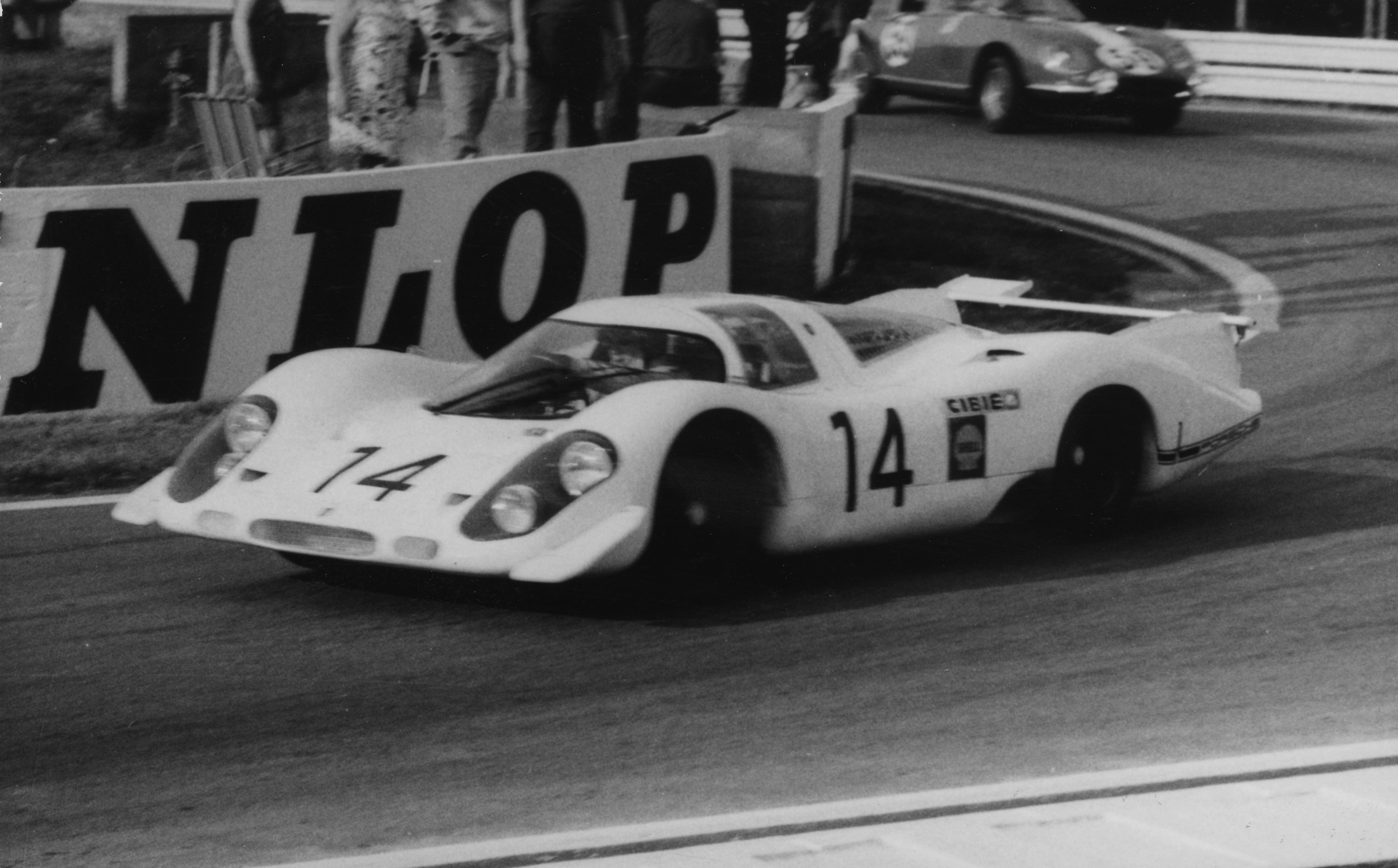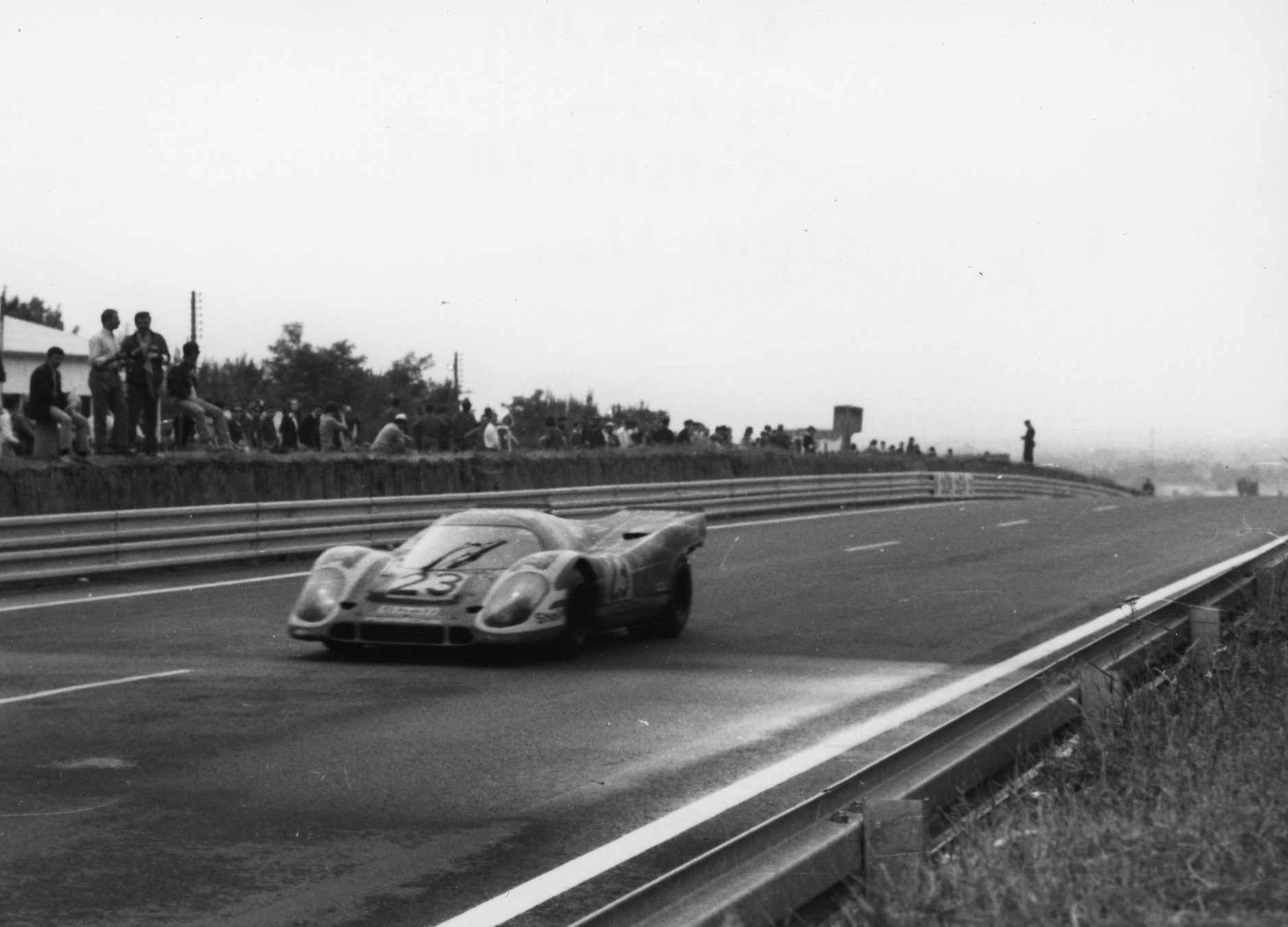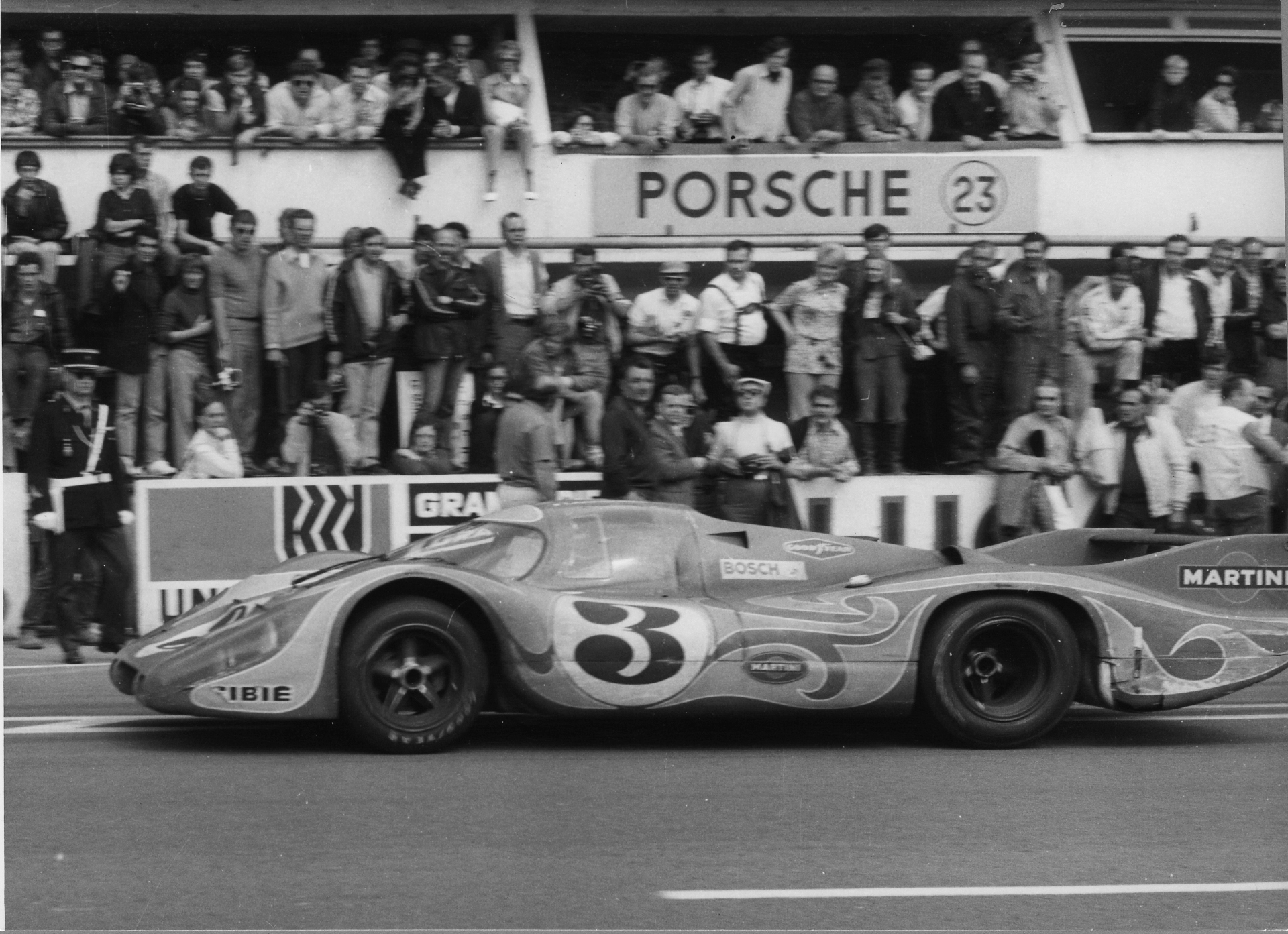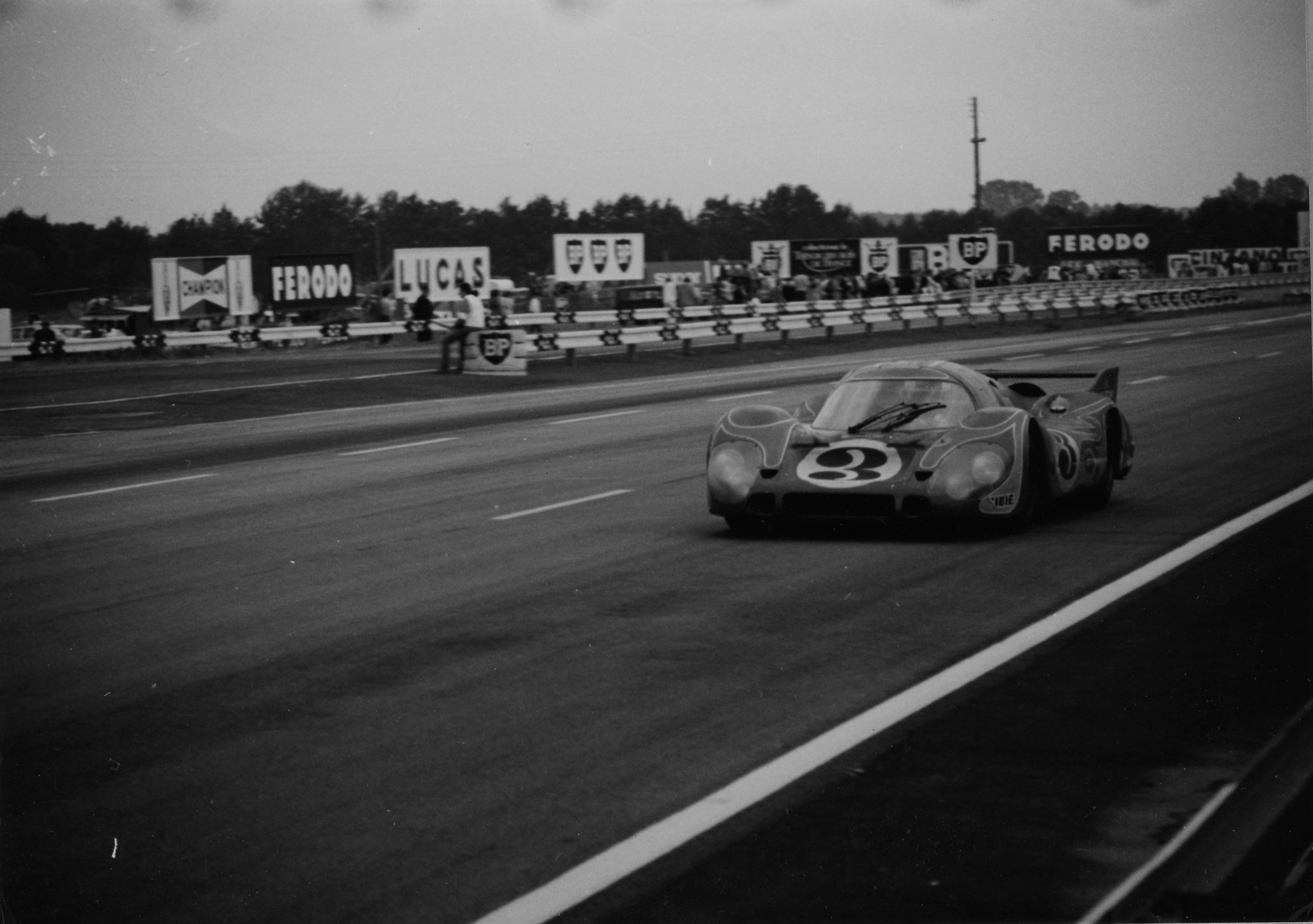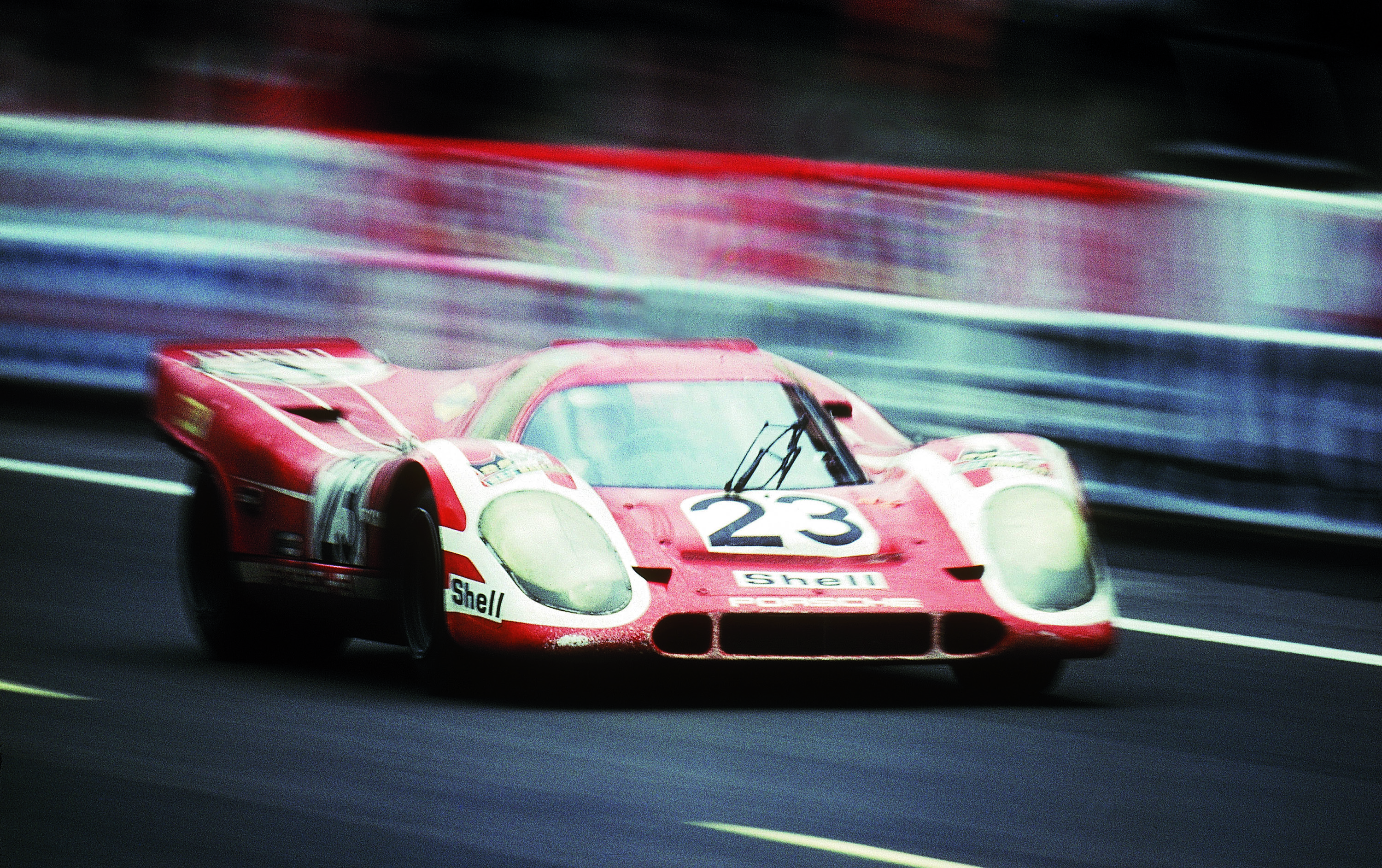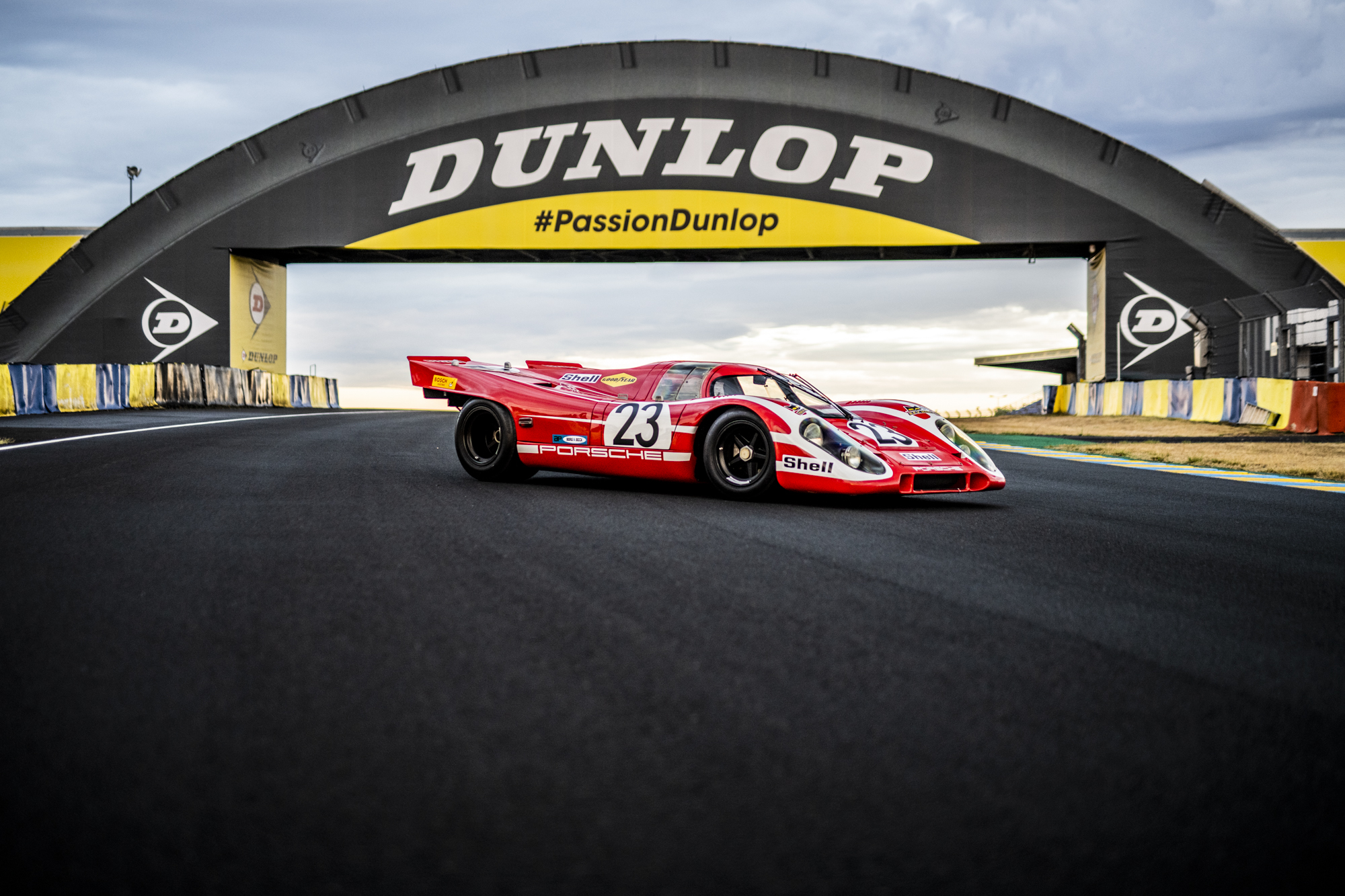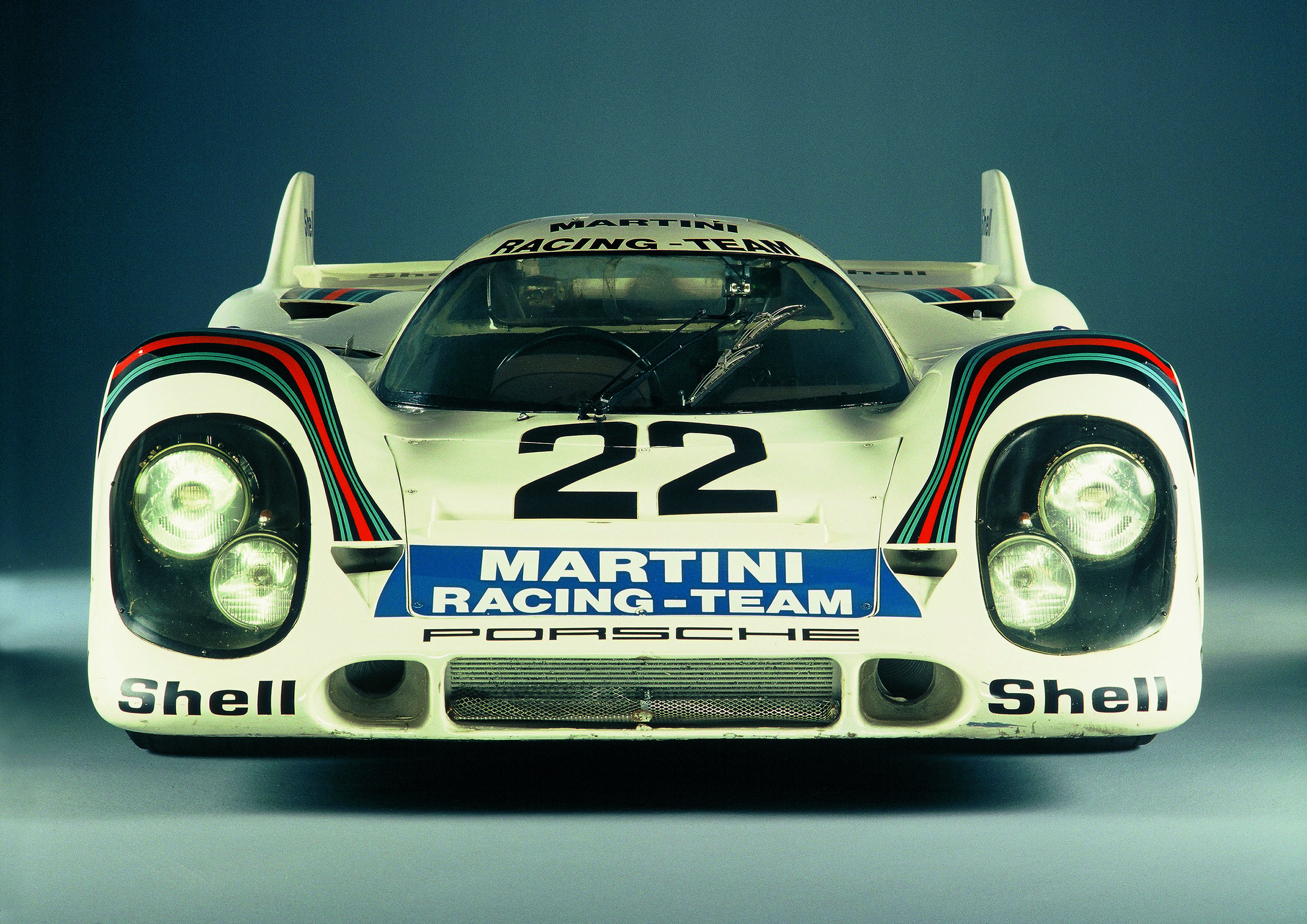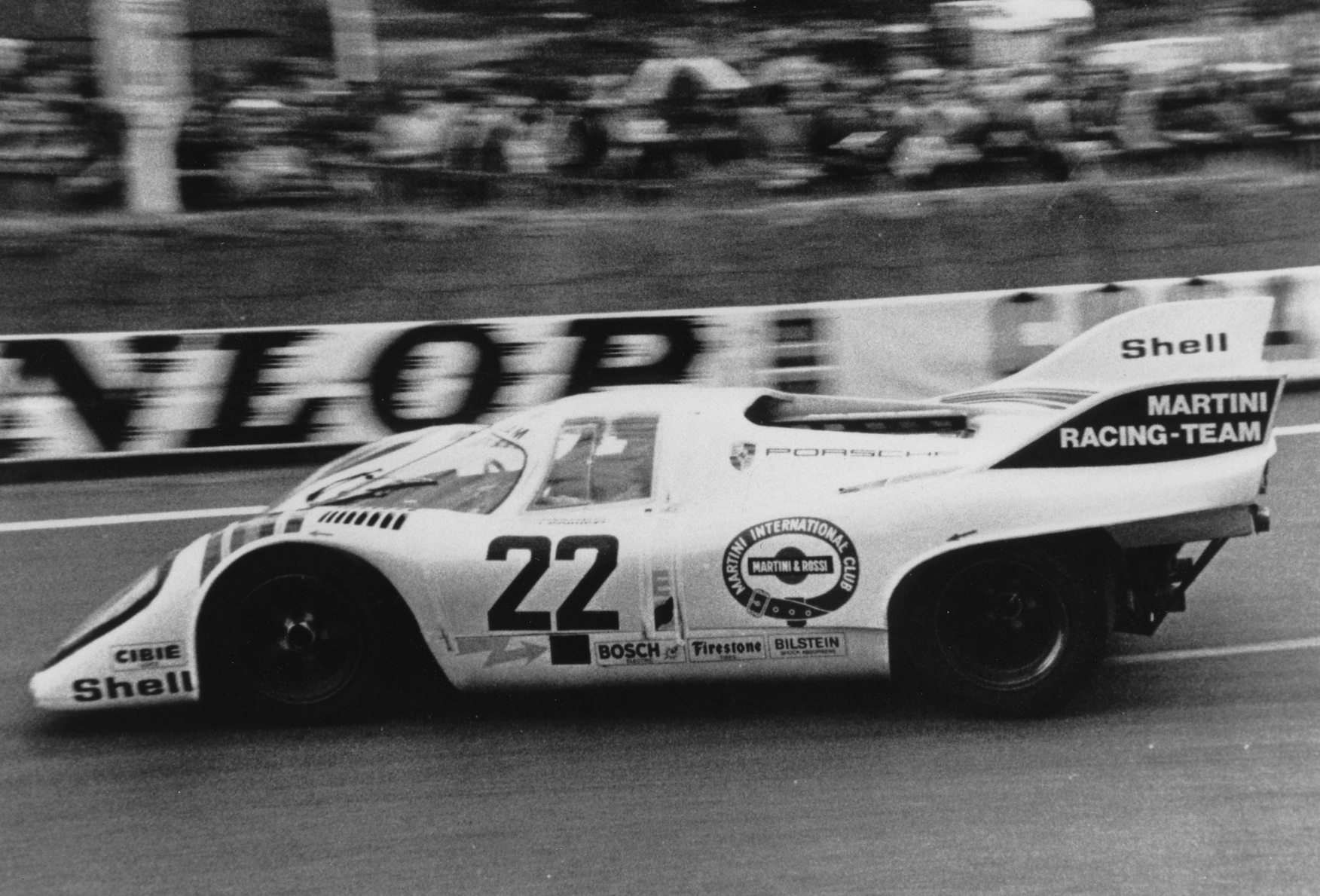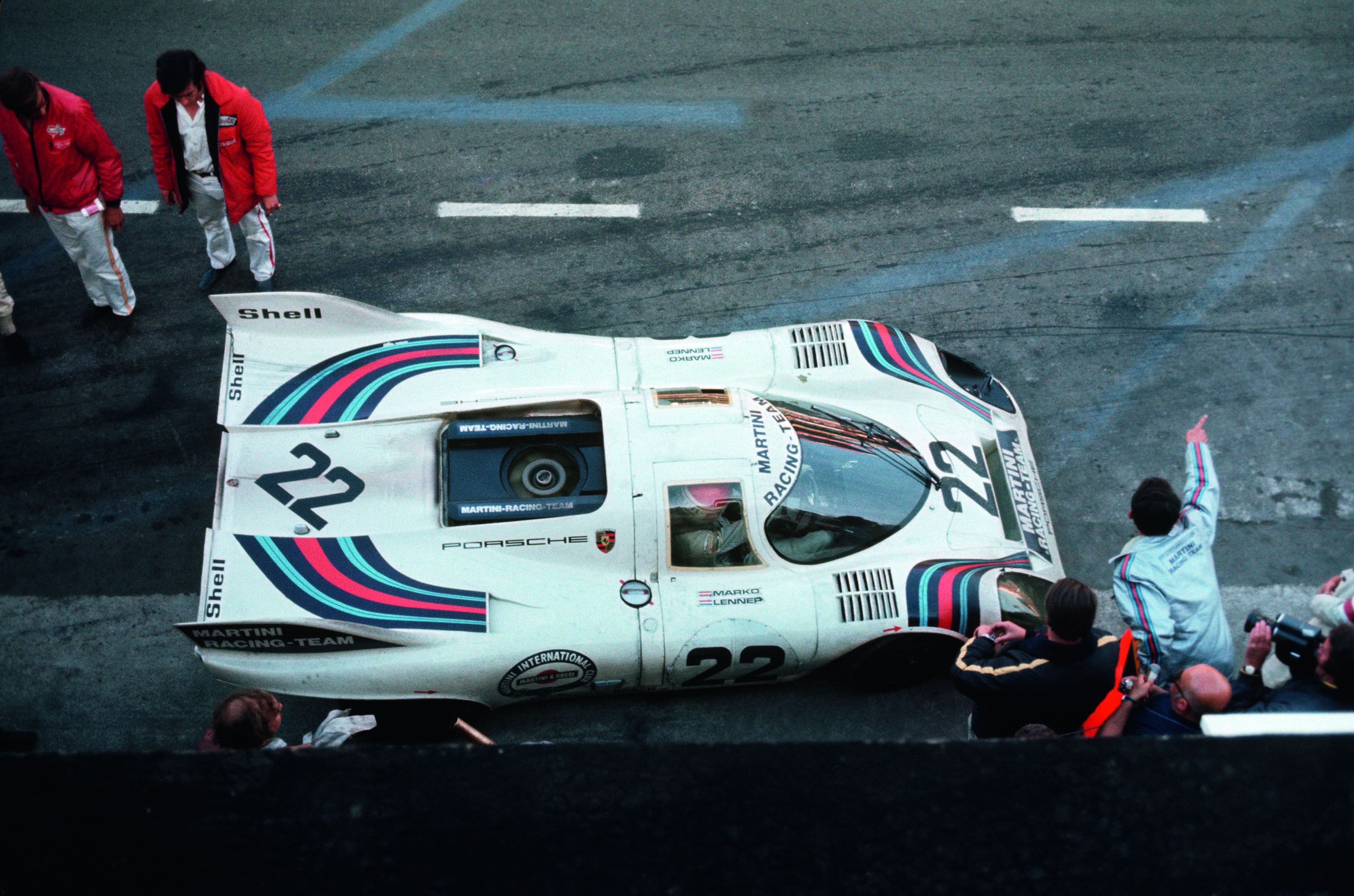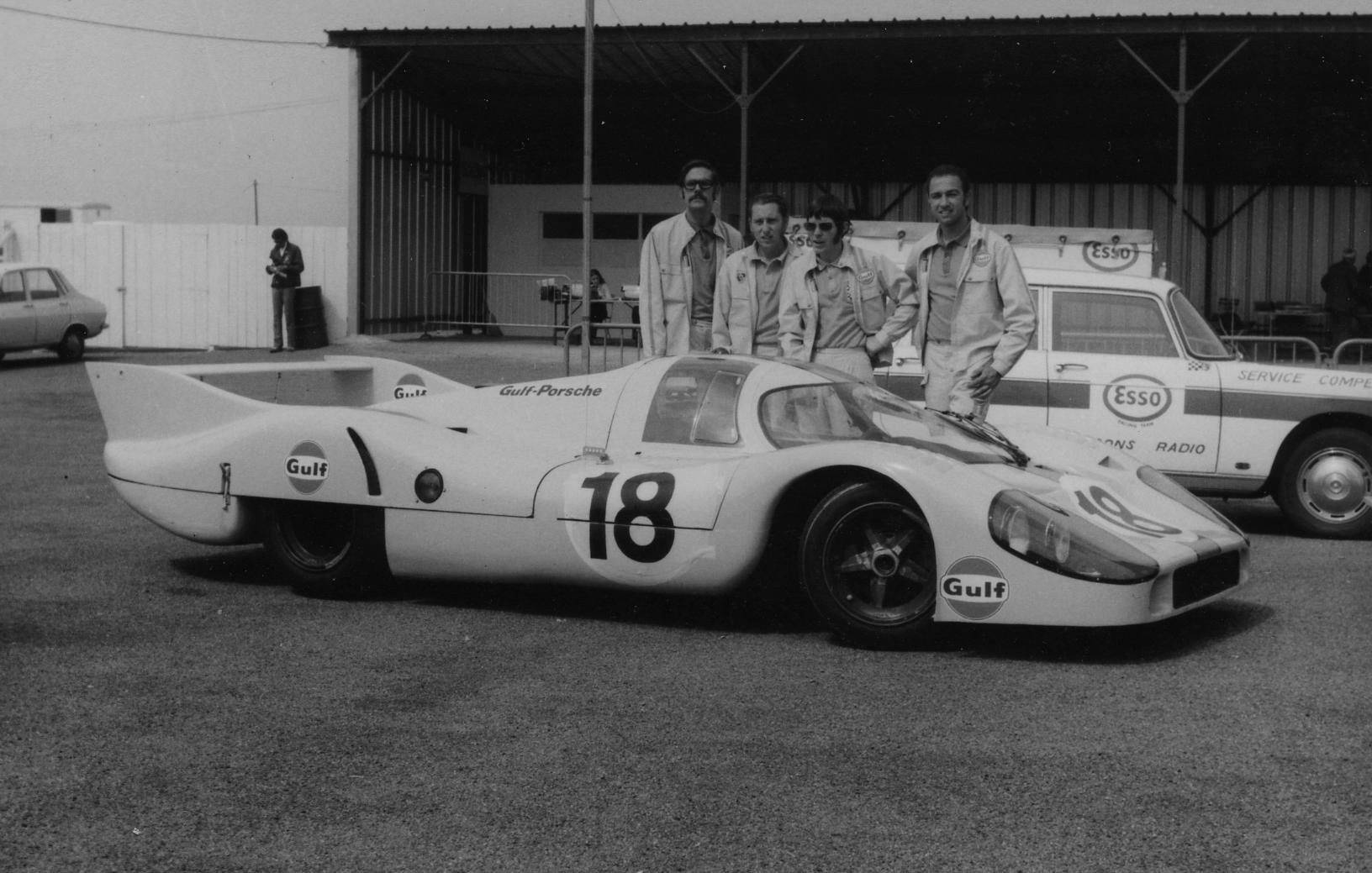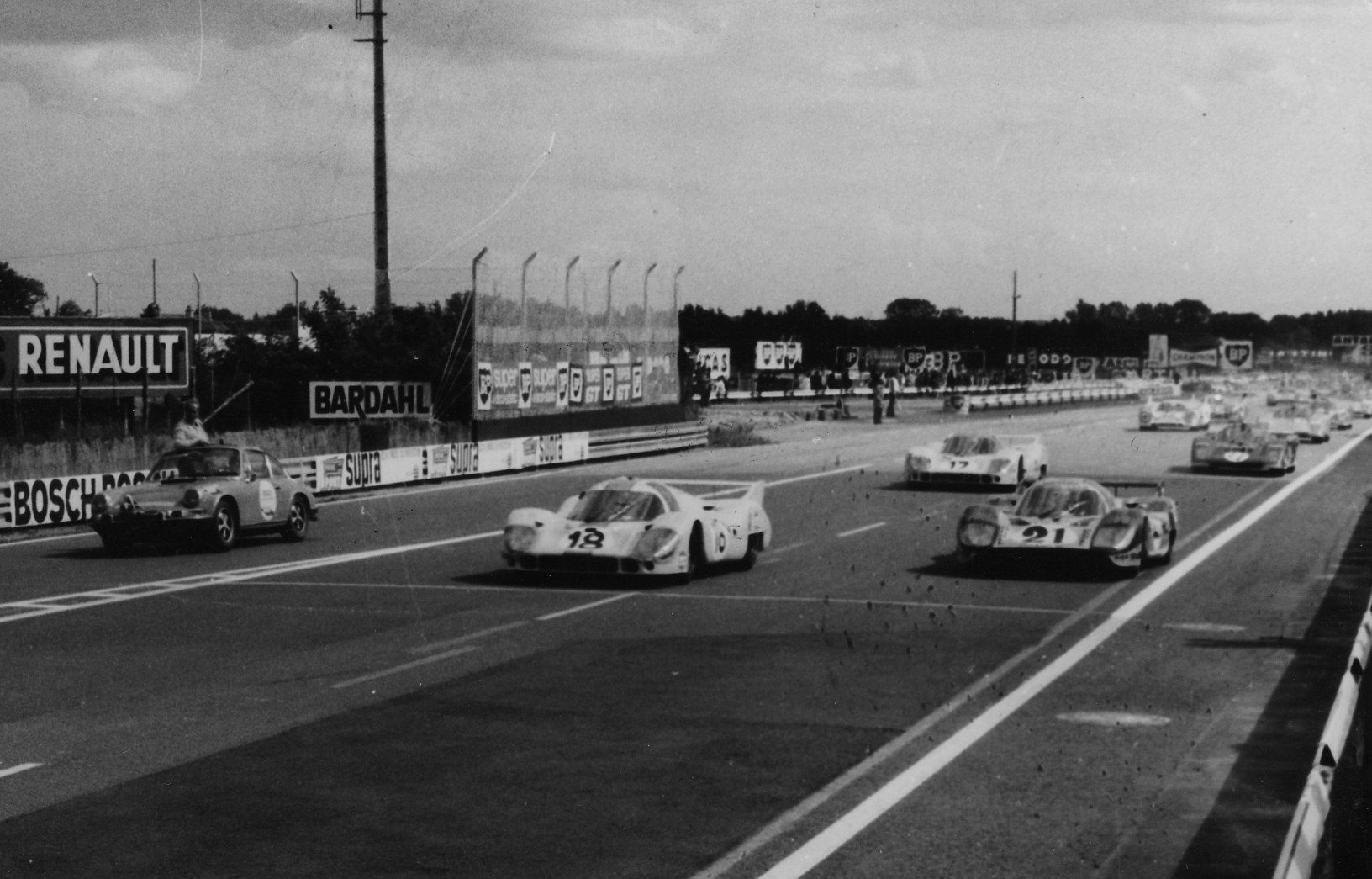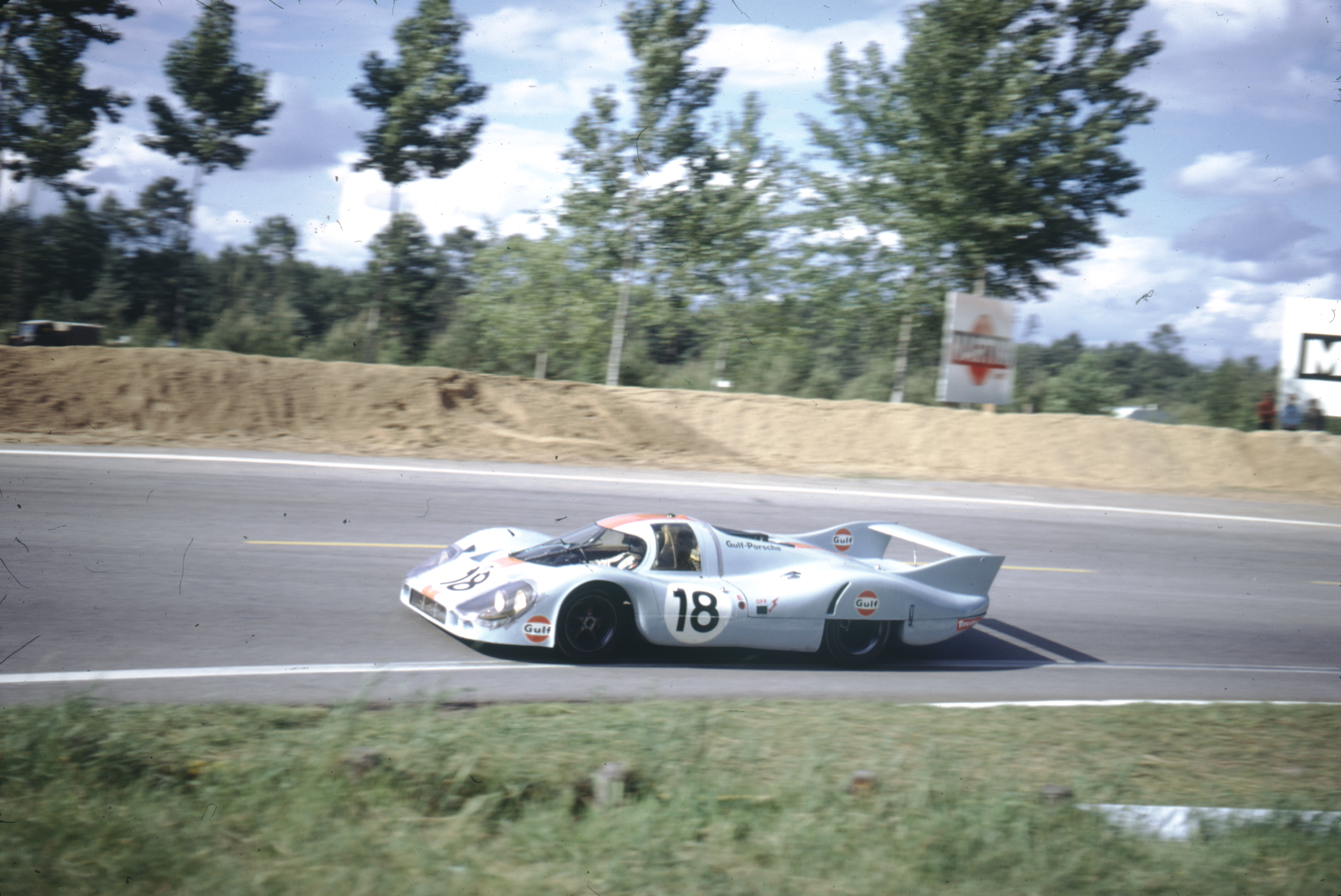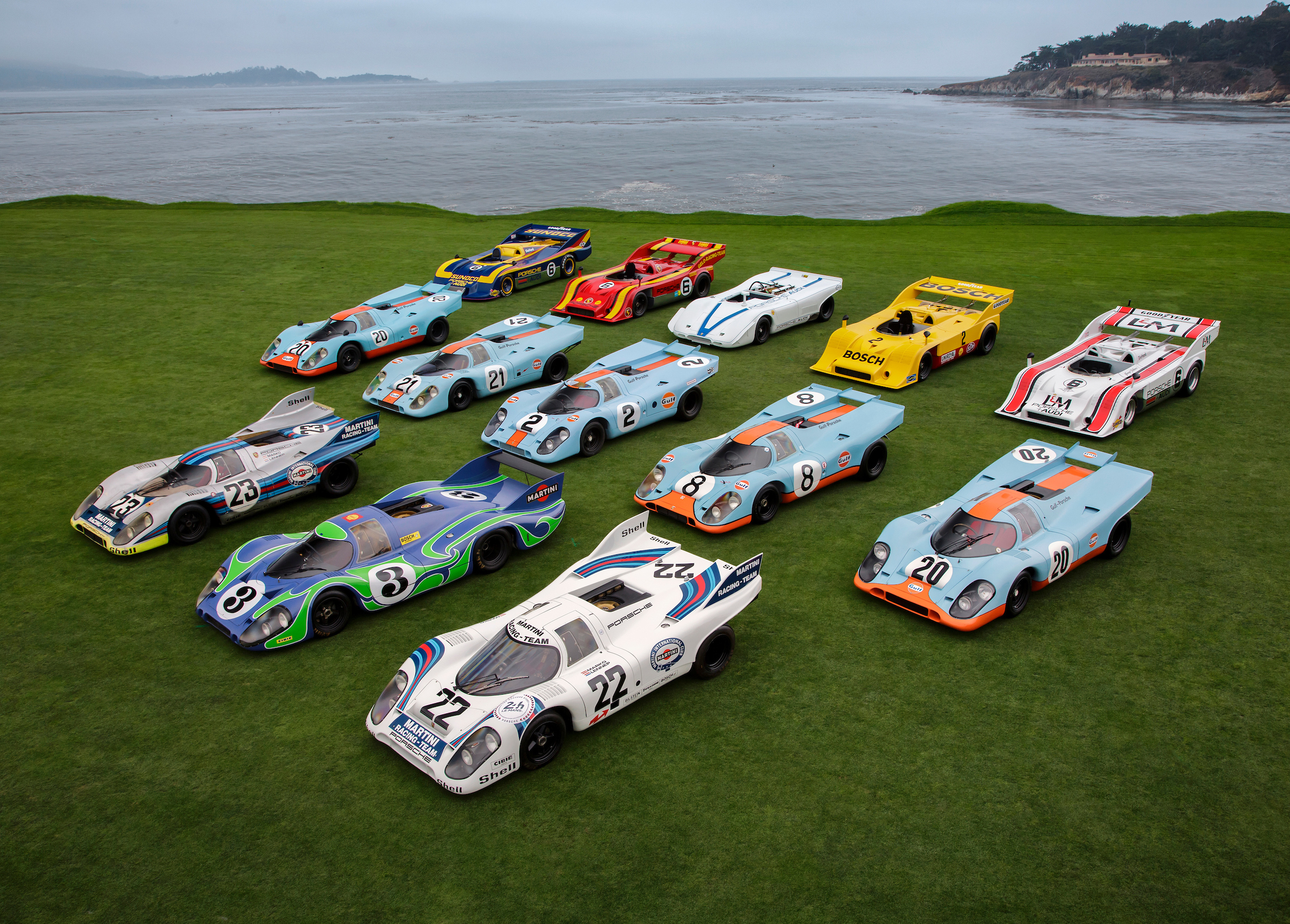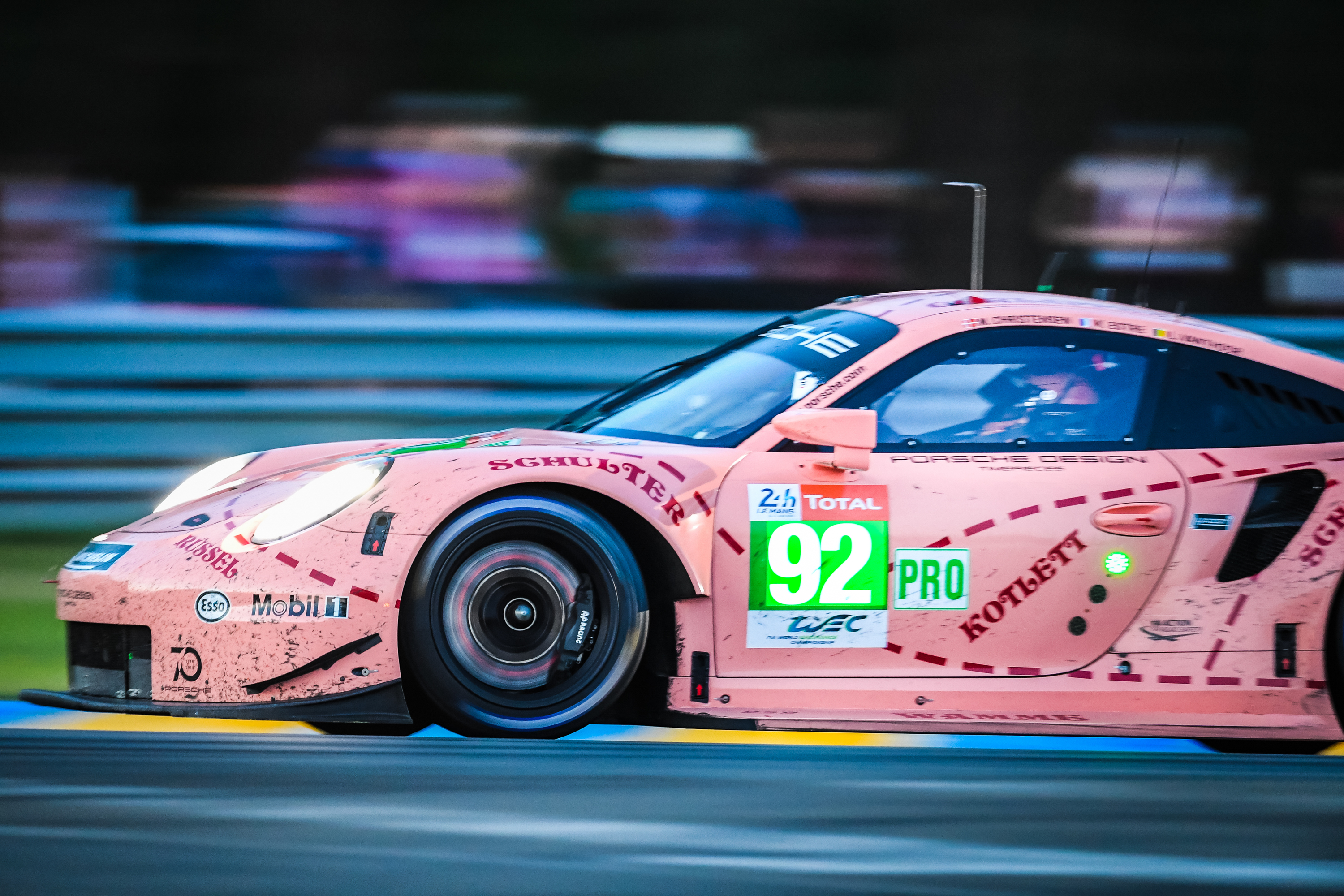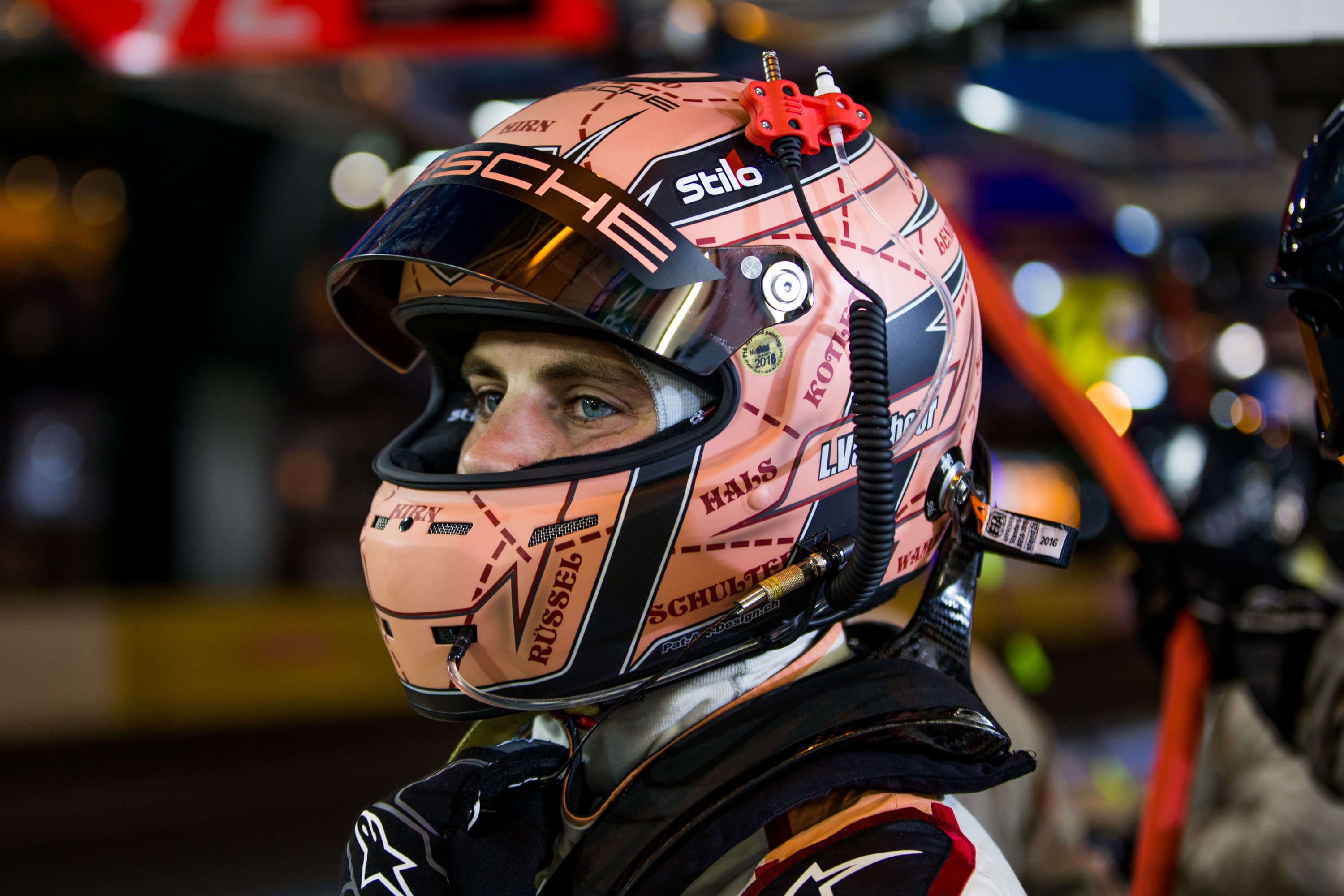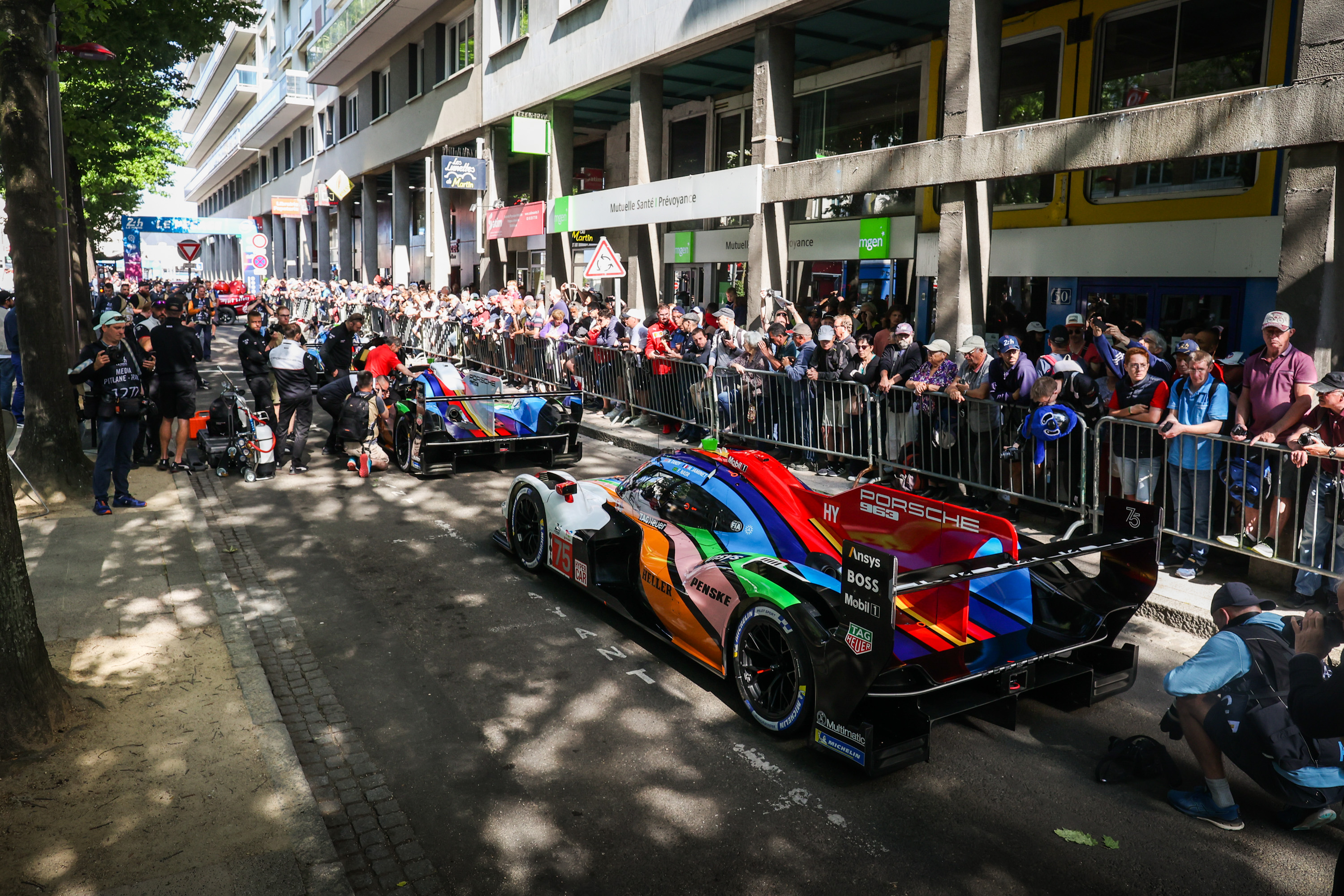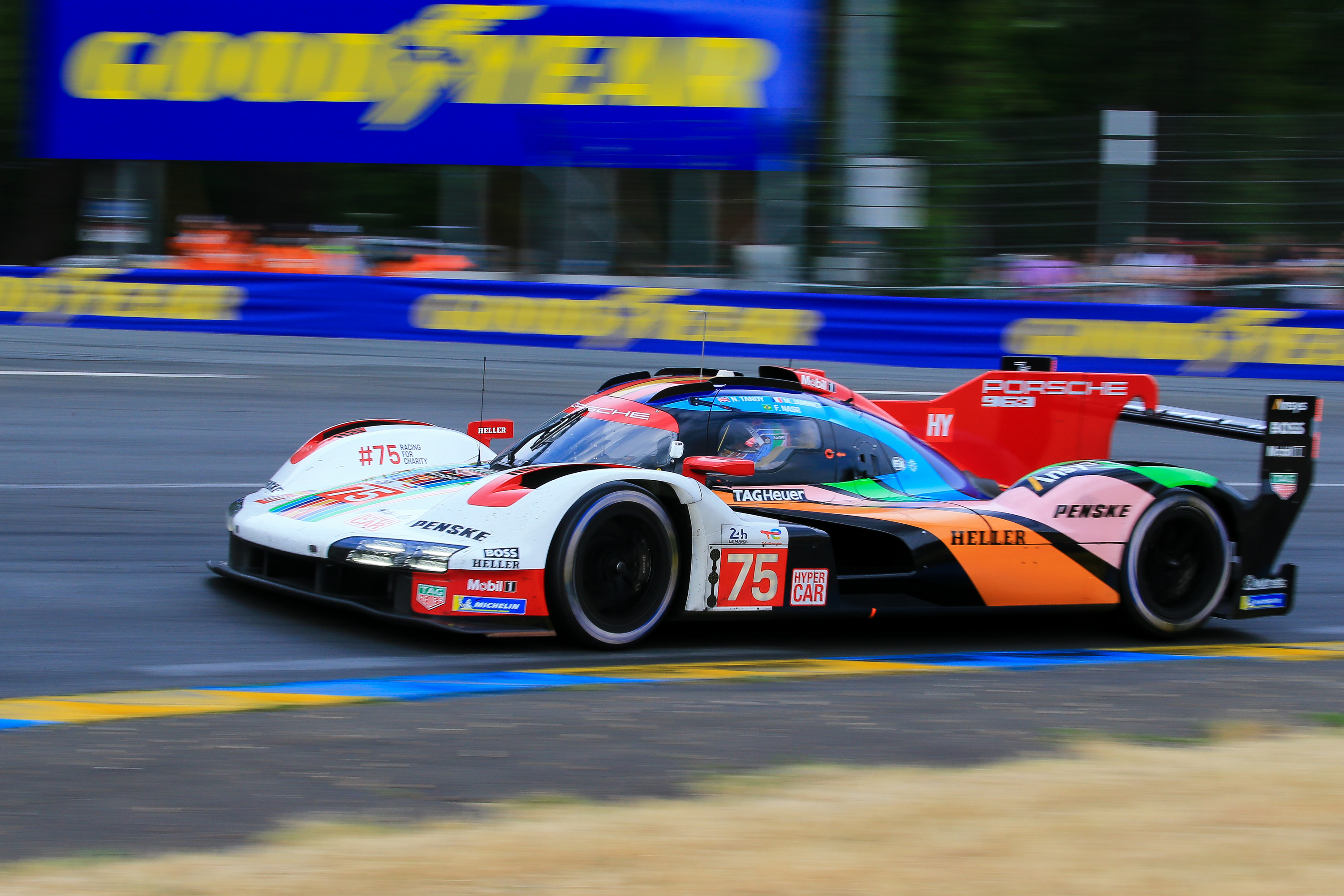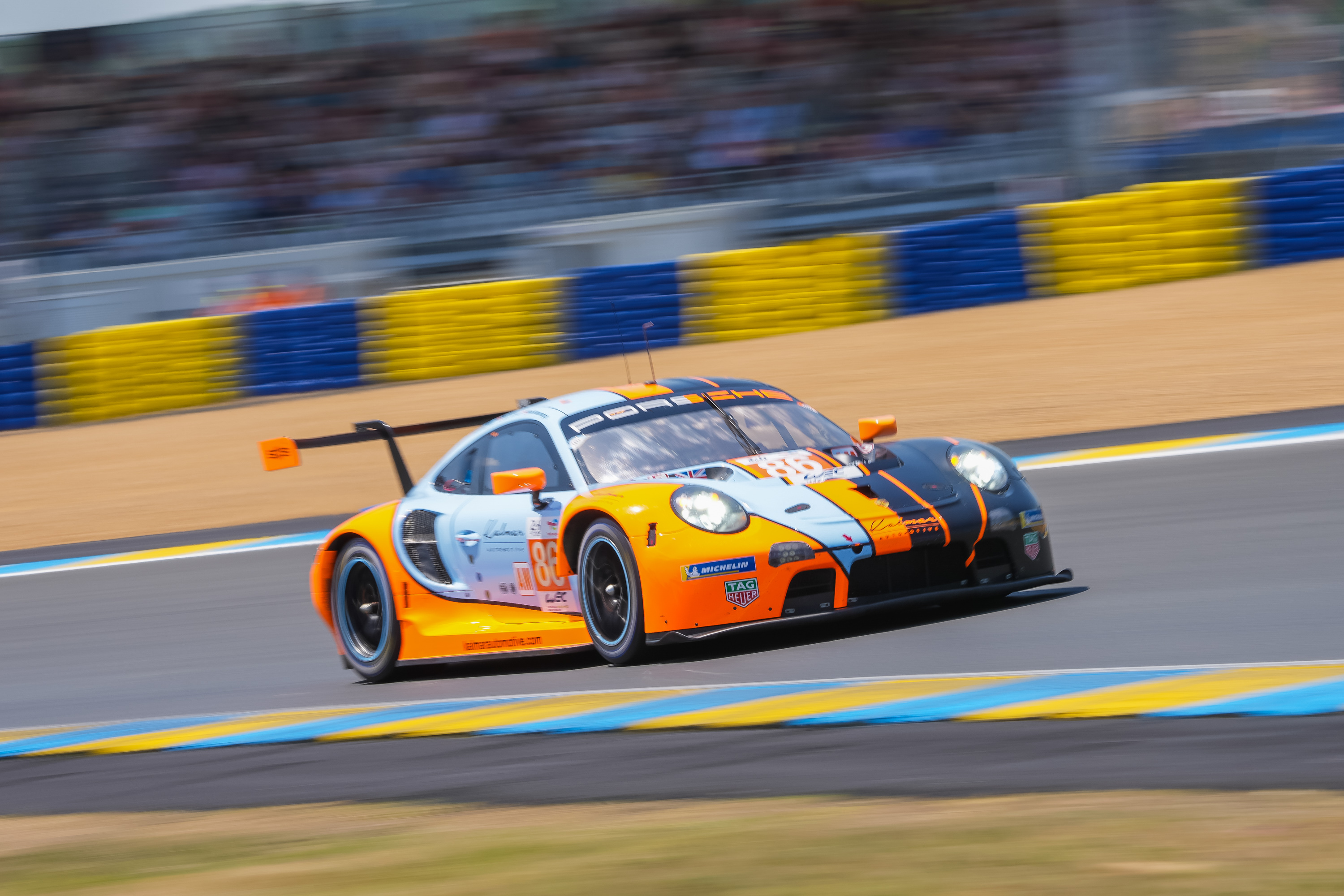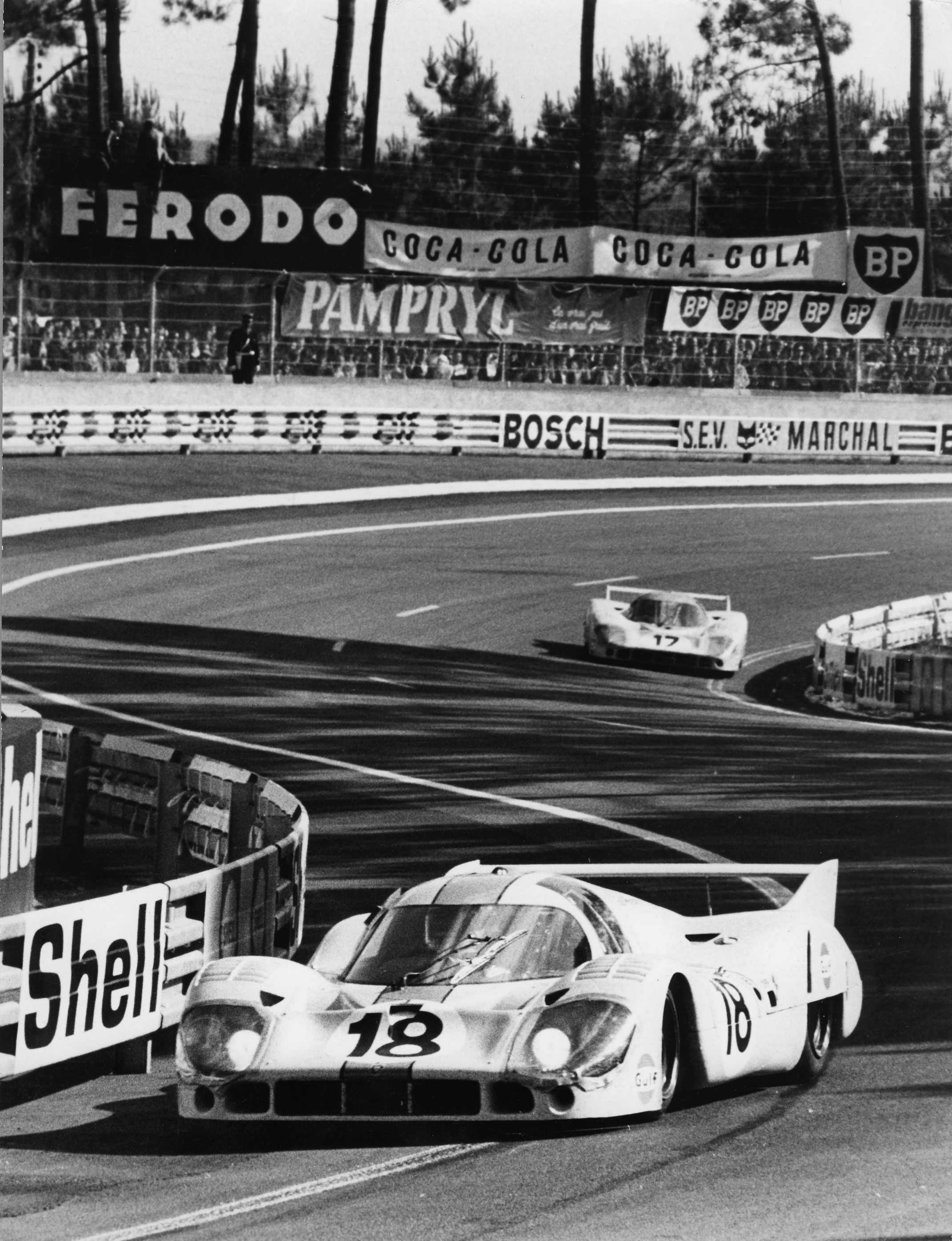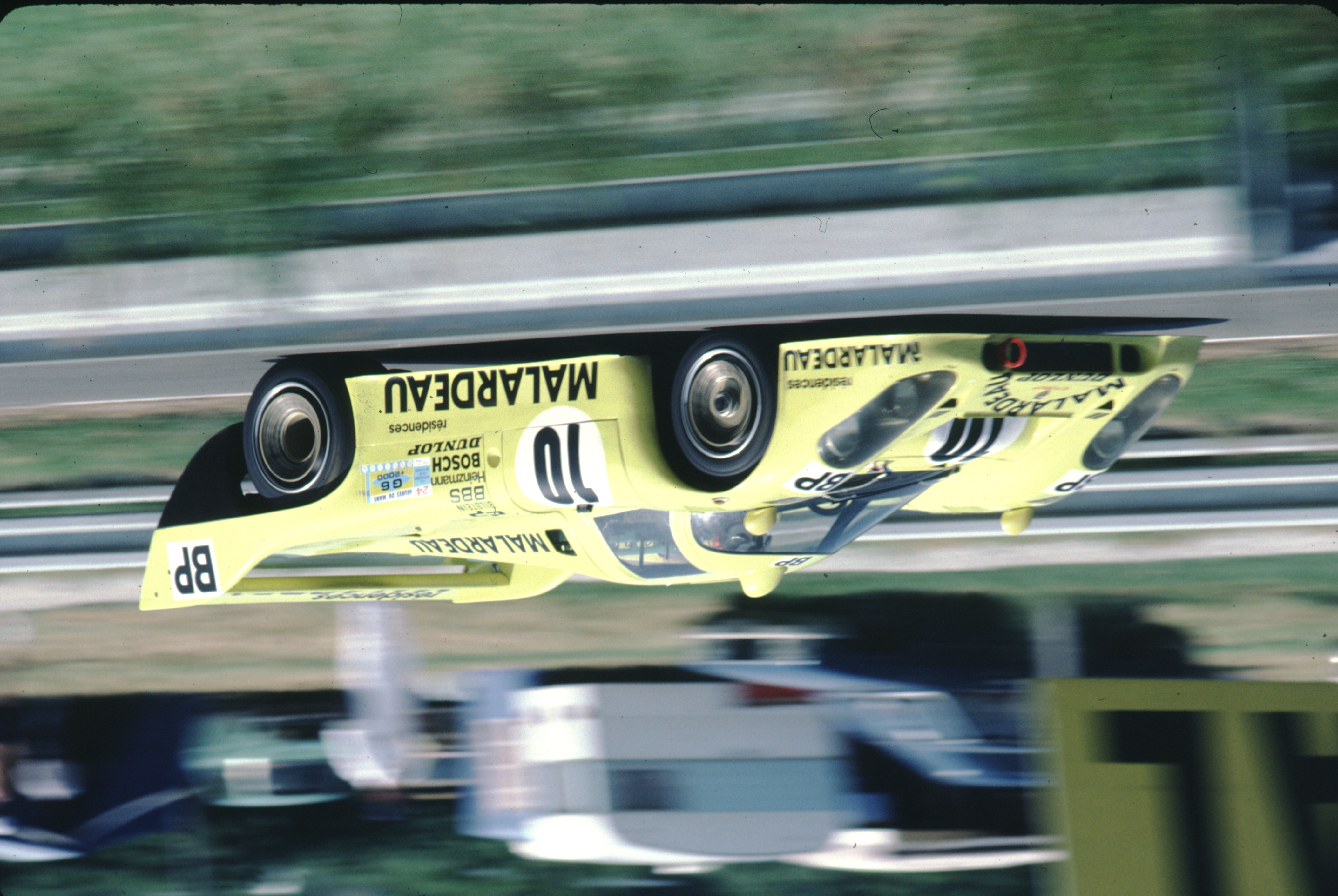The Porsche 917 won the 24 Hours of Le Mans twice, once in 1970 and again in 1971. It rose to become a legend among legends and remains a firm favourite among motor racing enthusiasts. The race winner built by the German marque is a genuine icon that continues to shine 50 years on. But what was the secret to its success?
The emergence of a dynasty
It’s much easier to remember a winning car, and that was Porsche’s thinking when it revealed the 917 at the Geneva Motor Show in 1969. The car was built in just ten months to comply with the new Sport class regulations. It featured a 4.5-litre engine with a flat-twelve cylinder layout delivering 580 hp, and an ultra-light aluminium tubular frame (for a total weight of 800 kg). On paper, a formidable car – even more impressive than its predecessor, the Porsche 908.
The brief was clear: win the 24 Hours of Le Mans as soon as possible. Porsche already had an excellent track record in La Sarthe with 28 class wins since 1951, but the German firm had never claimed overall victory. In 1969, the Porsche 917s encountered a series of difficulties and none of them made it to the chequered flag, despite Rolf Stommelen taking pole with a very fast lap. The first of the 908s came within a whisker of victory, finishing just 20 metres behind the Ford GT40 driven by Jacky Ickx and Jackie Oliver. However, the public was bowled over, not only by the new prototype’s design but also by its blistering speed.
The first 25 Porsche 917s required to compete were presented to the International Sporting Commission in April 1969.
The 917 underwent major changes for 1970, affecting both the engine and the chassis. Seven of them were entered, but not all came with the same bodywork. There was the more stable 917 K (for “Kurz” or “short chassis”) and the 917 LH (for “Lang Heck” or “long tail”). The latter were more aerodynamic, smoother and achieved a higher top speed on the Mulsanne Straight.
HISTORY LOVES A WINNER
Porsche reigned supreme at Le Mans, taking pole position, then dominating the race unchallenged. There were some retirements, of course, but none of the other cars managed to take the lead and the German marque claimed its first outright win at the 24 Hours of Le Mans. Hans Herrmann and Richard Attwood triumphed with the #23 917 K fielded by Porsche KG Salzburg, while the #3 917 LH from Martini Racing Team came in second.
The first Porsche win for the #23 917 K. The J.W.A Engineering #20 917 K could have been a contender, but it suffered engine failure in the 12th hour, after leading for seven straight hours.
In 1971, the car was given another overhaul to achieve even greater performance. That year saw a whole batch of records fall. Pedro Rodríguez achieved pole with an average speed of 250.069 kph in a 917 LH, making a lap time of just 3:13.9 and a top speed of 394 kph. The fastest race lap record was broken and, apart from a foray by a Ferrari 512 M, the race was again dominated by the Porsches. The winning #22 917 K driven by Gijs Van Lennep and Helmut Marko passed the flag having completed 397 laps, equally 5333.313 km at that time. A record that remained unbeaten until 2010.
And then the 917’s Le Mans story came to an end. New regulations required manufacturers to reduce their prototypes’ engine capacity, which forced Porsche to withdraw its iconic model from the 24 Hours. Other cars have won Le Mans more often, and sometimes with an even bigger gap. But the spectators – who came in droves at the time – had never witnessed such a fast car at the 24 Hours of Le Mans circuit. The 917s epitomised cutting-edge performance, with all the settings dialled to the max. Which is part of the reason why this prototype is so often cited as one of the best racing cars of all time. And why we remember it so well.
A second consecutive victory for a “K” model, this time with the 4.9-litre engine.
50 shades of Porsche
The Porsche 917’s rapid rise to prominence and two convincing victories are not the only reasons why it holds such an important place in our minds. There are a number of other standout reasons, such as the prototypes’ distinctive styling. At the time, it was usual to have a title sponsor or cars sporting the colours of a single brand, and not several, as is the case today. This gave the designers much more room to showcase their talent, especially with the paintwork.
Over three years, the Porsche 917s attracted some prestigious title sponsors, producing a series of liveries that have gone down in history. Fans were treated to the famous “Psychedelic” 917 LH in 1970, and the legendary “pink pig” Porsche 917/20 Sau Coupé in 1971, with sections of its pink paintwork labelled in butcher-style cuts. This unique model failed to make it to the finish line but is fondly remembered for its distinctive, enlarged shape, halfway between a 917 K and a 917 LH.
And of course, there was the most famous of them all – the orange and blue design associated with the Gulf oil company and sported by the cars fielded by John Wyer Automotive Engineering, or J.W.A. to friends. John Wyer was at the top of the field after two straight victories with the “Gulf” Ford GT40s (in 1968 and 1969), but never achieved the same success with Porsche at Le Mans. Yet the German cars decked out in Gulf colours are still widely celebrated. Not least because of a very special film…
The J.W.A. Gulf livery An enduring icon, whether you opt for Ford or Porsche.
Blue eyes and a square watch
Unmissable. The Porsche 917 owes much of its popularity to the film Le Mans directed by Lee H. Katzin and released in 1971, starring the legendary Steve McQueen. McQueen plays Michael Delaney, who drives the #20 Porsche 917 decked out by “Gulf”. The story of the film’s production is well known, despite the fact that it was a flop when it was released in cinemas. Even today, 53 years on, the spectre of this movie giant still lingers over the 24 Hours circuit.
You’ll often come across images of Steve McQueen in a “Gulf” racing suit and a number of similarly coloured Porsche 911s in the campsites around the track. Le Mans is now considered a movie classic and the Porsche 917 plays a prominent role.
Porsche and its history
Ultimately, there are plenty of reasons why the Porsche 917 has been so popular for so long, but none of this would have been possible without the brand’s own efforts. The German firm is deeply attached to its history, and does all it can to perpetuate the legend. In 2018, for example, it celebrated the company’s 70th anniversary by painting a Porsche 911 RSR in 1971 “pink pig” colours.
One fast pig as Kévin Estre, Michael Christensen and Laurens Vanthoor steered it to victory in the LM GTE Pro class!
Guénolé TREHOREL (ACO)
The “Martini & Rossi” liveries or the white stripes against a red background that featured on the 917 K that took the win in 1970 are often reproduced on standout models, such as the new Porsche 935 released in 2019. And, of course, the “Gulf” colours have been used almost constantly since that era. In 2023, Proton GR Racing opted for this livery – or half of it! – on its Porsche 911 RSR-19 fielded in LMGTE Am. The Porsche Penske Motorsport hypercar, the 963, also featured a design reminiscent of the 917’s glory days.
The 963 sported a series of stripes, recalling Porsche’s history. The green, for example, was a nod to the “Psychedelic” 917 LH, the pink to 917/20 ’pink pig’, the sky blue to the ‘Gulf’ livery, and the red to the 917 K that triumphed in 1970.
Antonin VINCENT (ACO)
This all adds to a sense of continuity which, in conjunction with Porsche’s commitment and the 917’s triumphant heritage, perpetuates the car’s iconic status. So that’s how a prototype built in under a year has continued to inspire millions of racing fans since the 1970s.
It’s never easy to pin down the reasons for success. Historical context plays a big part. The 24 Hours of Le Mans was extremely popular in the early 1970s. And the sight of such a formidable prototype ignited real passion.

